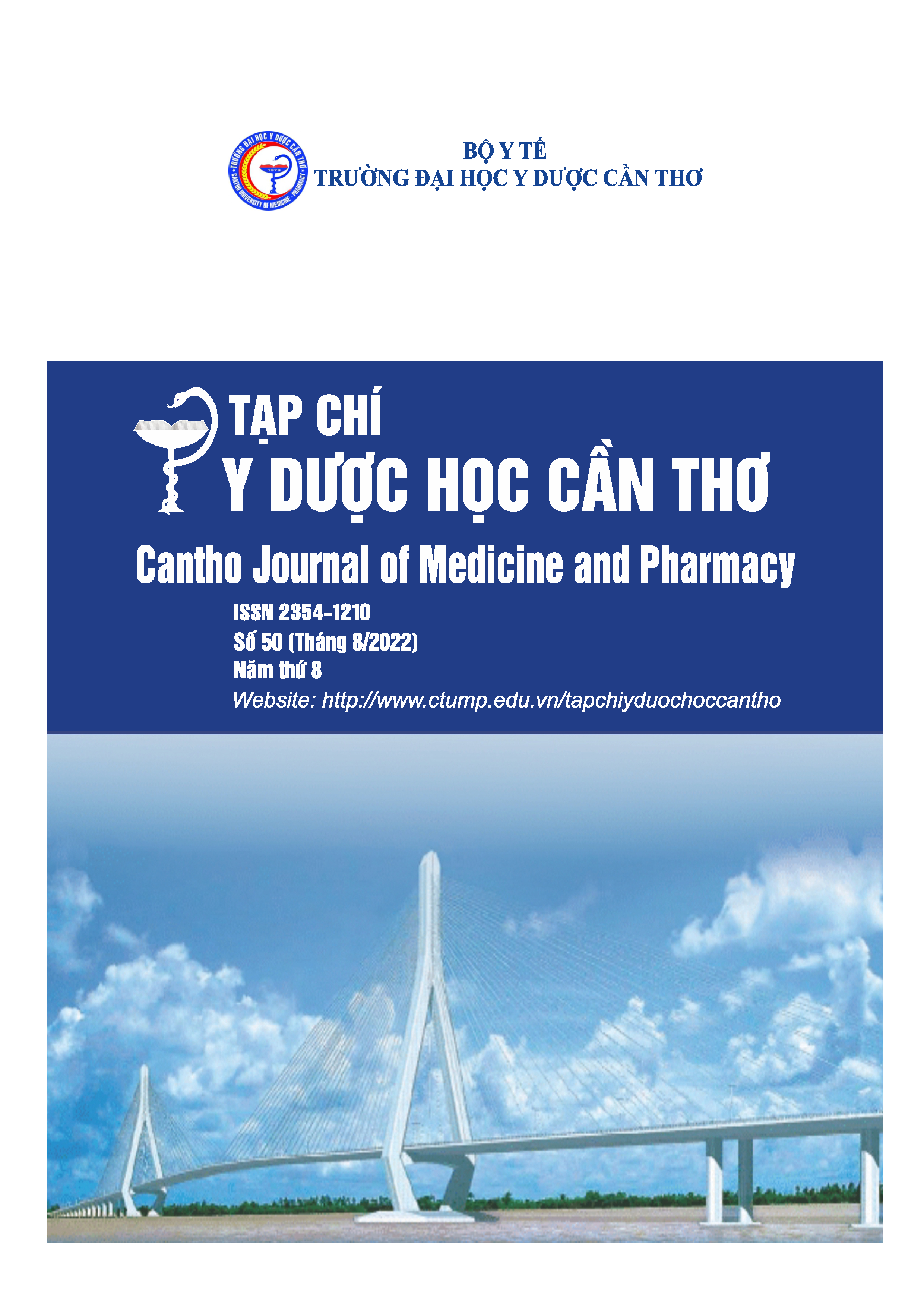INVESTIGATION CHARACTERISTIC RED BLOOD CELL IN GIEMSA STAINING AND BCB STAINING OF α-THALASSEMIA MODERATE PATIENTS AT CAN THO HEMATOLOGY - BLOOD TRANSFUSION HOSPITAL IN 2021-2022
Main Article Content
Abstract
Background: α-thalassemia trait patients are asymptomatic or have few symptoms, but they can pass α-globin genes mutated to the next generation. Moderate α-thalassemia (HbH) illustrates anemia at an average level with a variety of symptoms, causing many serious consequences, and affecting the development of the patient, family, and society. The diagnosis of α-thalassemia trait cases is necessary to limit the creation of moderate-severe forms and diagnose moderate α- thalassemia cases for timely and reasonable treatment. Peripheral blood smear with giemsa staining and BCB (Brilliant Cresyl Blue) staining slides is a vital screening technique. Objectives: To describe characteristics of erythrocytes on Giemsa and BCB. Materials and method: A cross-sectional descriptive study on 30 patients have been diagnosed α-thalassemia trait and HbH. Results: In 30 cases, 100% of red blood cells had anisocytosis (almost microcytes) and poikilocytosis, some patients had nuclear red blood cells (27%) and body Howell-Jolly (23%) on the Giemsa staining smear. The rate of reticulocyte increased with the average proportion standing at 5.37% and had HbH with an average rate of 0.23% on the BCB staining smear. Conclusion: Moderate α-thalassemia (HbH) changes red blood cells’ shape and size on the Giemsa staining, increases reticulocytes and appears HbH on BCB staining.
Article Details
Keywords
α-thalassemia, red blood cell characteristics
References
2. Ngô Diễm Ngọc (2018), “Nghiên cứu đặc điểm lâm sàng, kiểu gen của bệnh HbH và chẩn đoán trước sinh bệnh α thalassemia”, Luận án Tiến sĩ, Trường Đại học Y Hà Nội.
3. Nguyễn Ngọc Quang và cộng sự (2013), “Nghiên cứu một số đặc điểm huyết học và tình hình truyền máu của bệnh nhân thalassemia tại bệnh viện TW Huế”, Tạp chí Y học TP.Hồ Chí Minh, 17(5), tr.226.
4. Brancaleoni, V. et al. (2016), Laboratory diagnosis of thalassemia, Int J Lab Hematol, 38, pp. 32-40.
5. Chaichompoo, P. et al. (2019), “Abnormal red blood cell morphological changes in thalassemia associated with iron overload and oxidative stress”, Journal of Clinical Pathology, volume 17, No 8, pp.520-524.
6. Charles F. Arkin, et al. (1984), “Methods for Reticulocyte Counting (Automated Blood Cell Counters, Flow Cytometry, and Supravital Dyes)”, Clinical and laboratory standards institute, 24(8), pp.7.
7. Denise Harmening (2009), “Clinical Hematology and Fundamentals of Hemostasis”, F. A. Davis Company 5th edit, pp.93-115.
8. Fucharoen, S., & Viprakasit, V. (2009), “Hb H disease: clinical course and disease modifiers”, American Society Hematology, 1, pp.26-34.
9. Gallagher P. G. (2005), “Red cell membrane disorders”, American Society Hematology, 1, pp. 13-8.
10. Kenneth Kaushansky et al. (2016), Williams Hematology, McGraw-Hill Education 9th edit, pp. 725-758.
11. Michelle To and Villatoro Valentin (2018), A Laboratory Guide to Clinical Hematology, University of Alberta, pp. 103-118.
12. Scafidi J. M. and Gupta, V. (2022), Histology, Howell Jolly Bodies, StatPearls, pp. 3.
13. Sridevi H. B. et al. (2015), “Reticulum vs Inclusions: A Learning Experience in Haemoglobin H Disease”, Journal Clinical Diagnostic Research, 9(10), pp. 17-19.
14. Thompson C. C. et al. (1989), “Positional effect of cis/trans-alpha-globin gene deletions on the formation of "H" bodies”, American Journal of Hematology, 31(4), pp. 242-247.
15. Venugopal S. et al. (2008), “Hemoglobin H disease in Muscat, Oman - A 5-year study”, Oman Medical Journal, 23(2), pp. 82-85.


